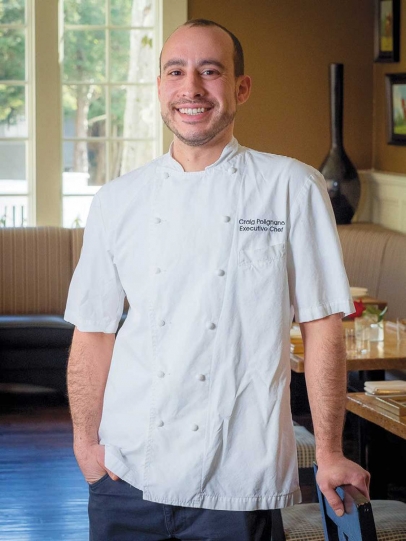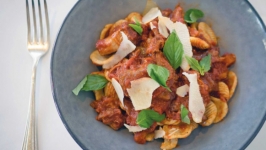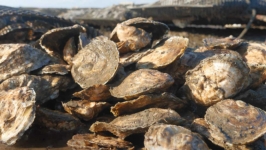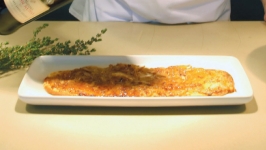Story of a Dish: Oxtail and Tomato Stew with Orecchiette
CHEF: Craig Polignano
RESTAURANT: Ryland Inn
LOCATION: Whitehouse Station
The Landmark Hospitality website doesn’t list the bios of key personnel under typical headings such as “Our Staff ” or “Our Chefs.” Instead, the restaurant group offers those profiles under the title “Memorymakers”—a designation that Craig Polignano, executive chef at Landmark’s Ryland Inn in Whitehouse Station, takes to heart. “It’s our job to create memories for people by giving them something amazing,” he says.
Sensory memories formed during Polignano’s own childhood are the inspiration behind his Oxtail and Tomato Stew with Orecchiette— a dish that pays homage to weekly Sunday dinners at his Italian grandmother’s home. “It was always a big thing—just spending time with family and enjoying good food,” Polignano says. “We would always have some kind of pasta. I was very young but I have memories of my grandmother making orecchiette on her kitchen table with the classic red-and-white tablecloth that you fi nd in most Italian restaurants.”
Sunday pasta was tossed in tomato sauce that his grandmother made from her home-canned garden tomatoes. Some beef or pork was often added to the sauce. After years of tweaking, Polignano has evolved her tomato-dominant version into his own rich, hearty stew-like sauce. In early iterations of his grandmother’s sauce, Polignano used short ribs. That changed, he says, as he matured as a cook. “I realized that I really like oxtail. I like the viscosity from the gelatin that the oxtail adds to the sauce. It gives a really rich beef flavor.”
“The most important thing,” Polignano adds, “is to get a nice deep sear on the meat.” After searing, the meat is removed from the pan and replaced by the vegetables, which, when cooked down to a melting texture, create a layer of sweetness that balances the acidity of the final ingredient—tomatoes. (If you don’t have a garden or a grandmother who cans, Polignano suggests using canned whole San Marzano or Jersey Fresh tomatoes and crushing them in your hands as you add them to the pot.) Along with adding acidity, the tomatoes perform the crucial function of releasing the flavorful caramelized bits of meat and juice stuck to the bottom of the pan.
After the meat is returned to the pan, the sauce is cooked for several hours to allow the tomatoes to stew down and mingle with the beef. It is this long, slow cooking that transforms the sauce from bright tomato red to deep mahogany brown and gives it a satisfying richness.
Polignano says any pasta shape will work well but he prefers orecchiette because it acts like little spoons gathering up the sauce. (He enhances his homemade orecchiette dough with ricotta, which adds moisture and flavor.) Just before serving, the pasta and sauce are combined in a pot—about 60% pasta to 40% sauce—along with a small scoop of pasta cooking water to bind it all together. Grated Parmesan completes the dish, which Polignano recommends serving with a rustic bread.
Like his grandmother, Polignano sees this as a dish that is best when shared. It’s one of his favorite meals to prepare at home for gatherings with friends. “What I’ve taken from my grandmother is the love for food and the way food brings people together,” Polignano says. “It’s a common bond—everybody needs to eat and everybody enjoys good food.”
RYLAND INN
111 Old Hwy 28, Whitehouse Station
908.534.4011










